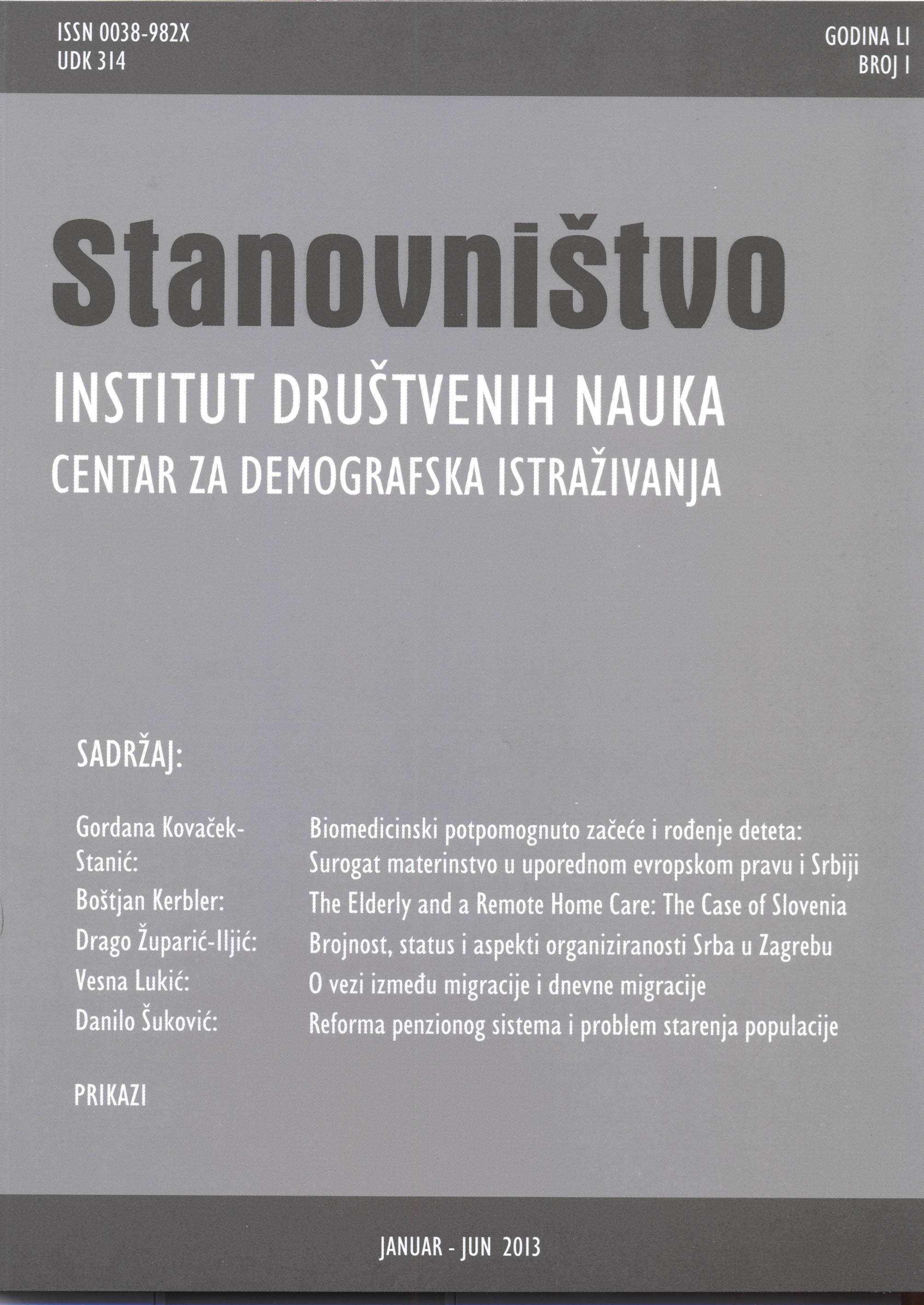O vezi između migracije i dnevne migracije
On the interrelations between migration and commuting
Author(s): Vesna M. LukićSubject(s): Social Sciences, Sociology, Demography and human biology, Migration Studies
Published by: Институт друштвених наука
Keywords: commuting; migration; labour; mobility strategies; households
Summary/Abstract: In this paper, we emphasize the significance of studying the interrelations between commuting and migration. The aim of the paper is to point out the factors which affect these interrelations (demographic and socioeconomic characteristics of migrants and commuters, labor market, real estate market, information, life style, etc.), with the special emphasis on the role of commuting distance onto the chosen mobility type. Besides theorethical frameworks and results of the selected foreign researches up to date, the overview of research of interrelations between migration and commuting in Serbia has also been presented. While earlier studies conducted by Gawryszenski (1978), Termote (1980) and Reitsma & Vergoossen (1987) pointed to the replacement of migration types between each other within country, in recent literature the interaction between migration and commuting has been studied in a trans-boundary context of the contemporary EU. Modern trend of long distance commuting instead of migration and the concept of substitution/replacement regarding migration and commuting have also been discussed. In Serbia, there is a positive correlation between commuting outflows and immigration in rural settlements of Vojvodina province. Namely, commuting and migration are complement, which is the characteristic of both processes sub-urbanization and ex-urbanization (Lukić, 2012). In addition to ownership of real estate and previous migration experience, marital status influenced the chosen mobility type in Serbia as well. Adjustment to changes of Serbian labor market is mostly conducted via migration (Miletić, Lukić, Miljanović, 2011). Interrelations between migration and commuting are very significant due to the tendency of transformation of some commuters into migrants. This process has its consequences, both on demographic as well as the overall socio-economic development of the area of commuters’ origin and destination. However, even though the surveys conducted in Serbia during the late 1980s and at the beginning of the 1990s showed that around 30 per cent of commuters expressed desire to move to their place of work, the degree of realization of these intentions remained unknown. While in some countries traffic studies and data from the management of the enterprises are used as sources of data on commuting, the studies on the commuter population in Serbia are based solely onto two types of data sources. These are census and poll surveys. Although they have more potential than the official statistics for the analysis of the links between migration and commuting and other characteristics of commuters, poll surveys on this topic in Serbia are relatively rare due to financial and organizational obstacles. Therefore, even though the interrelations between migration and commuting have been confirmed, there is still a lot of space for their research indicating the need for further methodology developments in researching these types of population mobility.
Journal: Stanovništvo
- Issue Year: 51/2013
- Issue No: 1
- Page Range: 69-90
- Page Count: 22
- Language: Serbian

